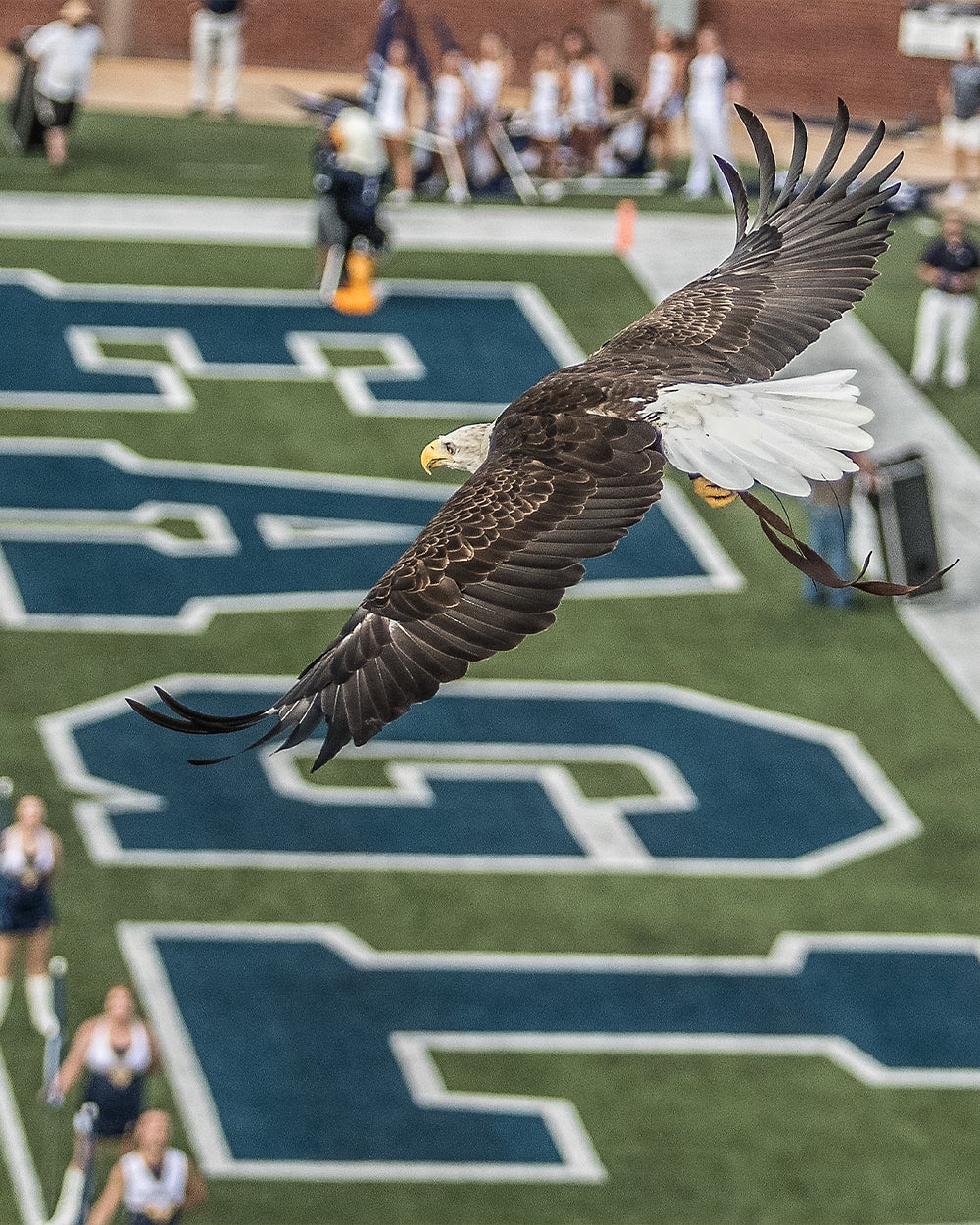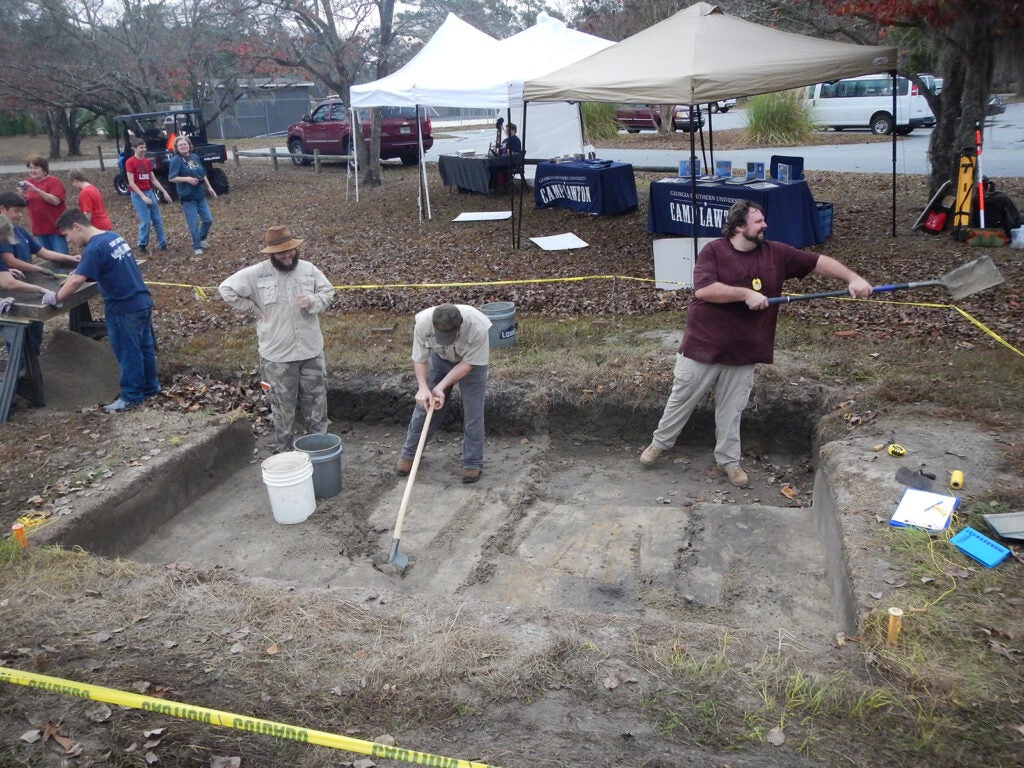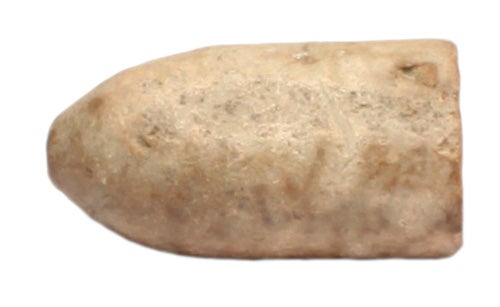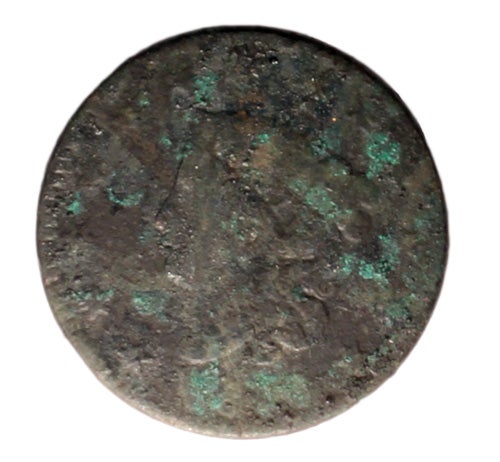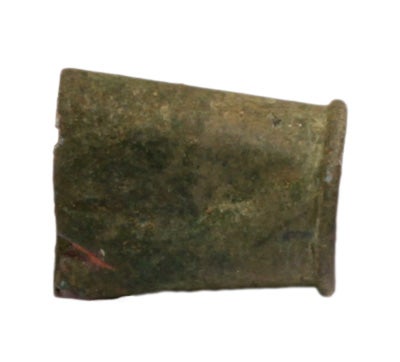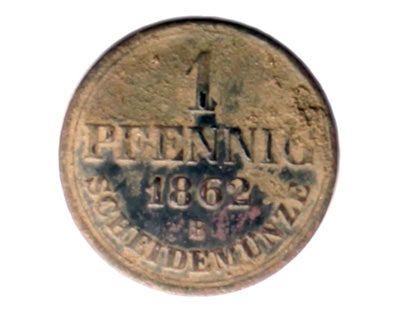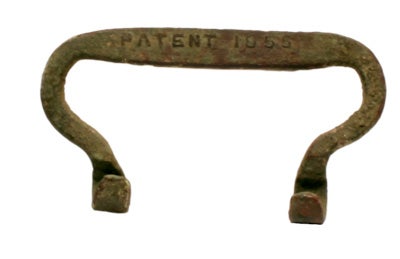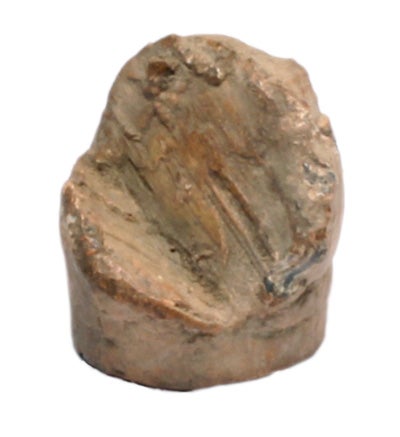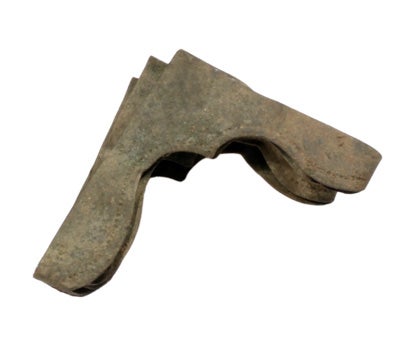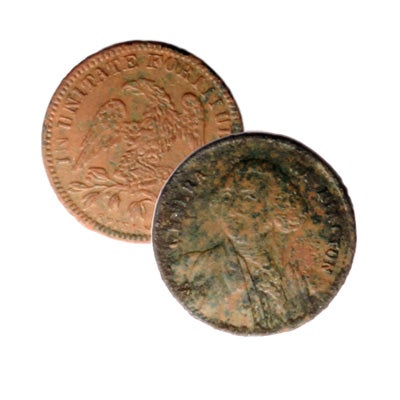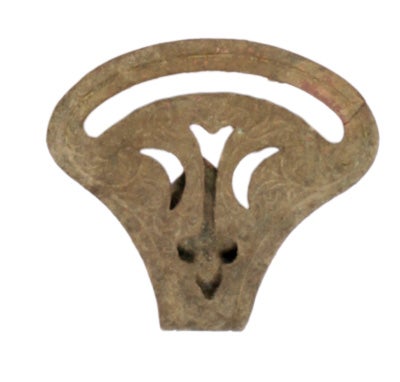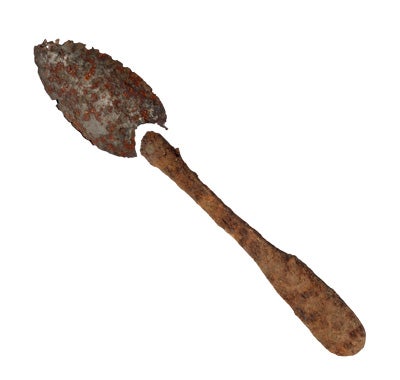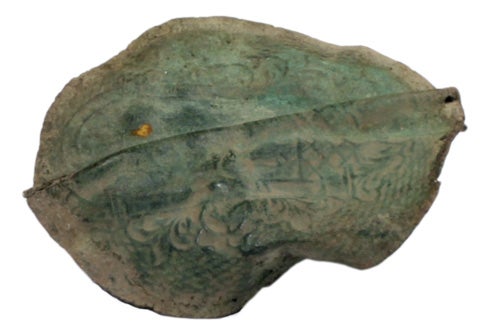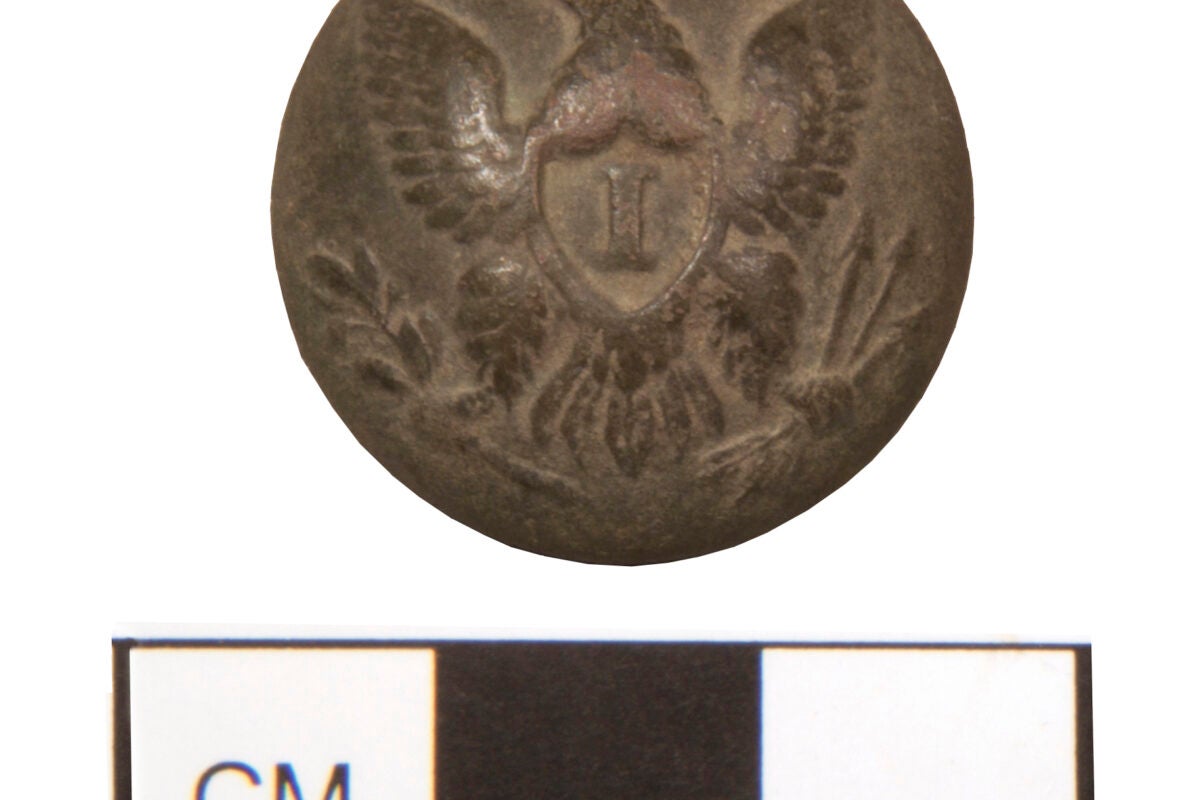Featured Artifacts
A Large Machine-cut Nail
While a seemingly uninteresting artifact, this nail, and other ones like it that we have recovered, can tell us a lot about how the prisoners lived. The nail was machine cut. Throughout most of the 19th century, machine-cut nails were by far the most common. They were produced from flat sheets of iron, which were then cut by heavy machinery. They were (and are) also often called square nails. Modern wire nails were not mass-produced until after the Civil War had ended. During excavations in the prisoner encampment area at Camp Lawton, we have recovered dozens of these cut nails. As with railroad spikes that have also been recovered on site, the prisoners probably became very adept at scavenging anything they could use. These artifacts undoubtedly served to hold together the huts that prisoners fashioned from whatever limbs and scraps of lumber they could scrounge. We are currently in the process of mapping these and other artifacts in an effort to more precisely locate where many of these huts were.
View a 3D Render of the Nail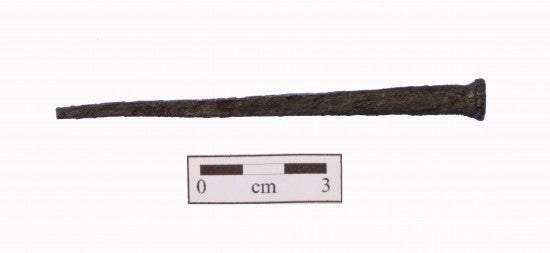
Colt L Tool
This was a combination tool used on Colt revolvers, such as the 1851 Navy and 1860 Army models. The long end served as a screwdriver. The short end was cylindrical, and the tip was a nipple wrench, fitting over the nipple, or cone, for each shell in the pistol cylinder. This iron tool was recovered from the prisoner encampment. Although firearms were obviously taken from prisoners, these kinds of small tools often stayed with them. The artifact has been conserved in the Georgia Southern archaeology labs. The photograph shows the artifact prior to conservation.
View 3D Render of the L Tool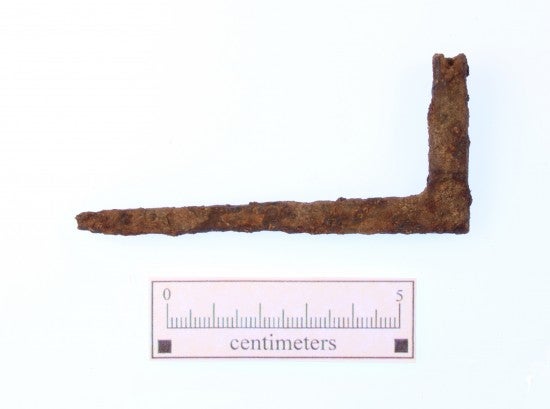
Brass Keg Tap
Keg taps were items in regular use in military camps in the north and south. They were used to tap wooden barrels that held different liquids, such as vinegar and beer. This artifact was recovered from a part of the site at Camp Lawton that we believe is a Confederate officer’s quarters. It was found in association with other military-camp gear from the period. The segment that would have been driven into a barrel has been damaged, which is probably why it was discarded.
Vew 3D Render of the Keg Tap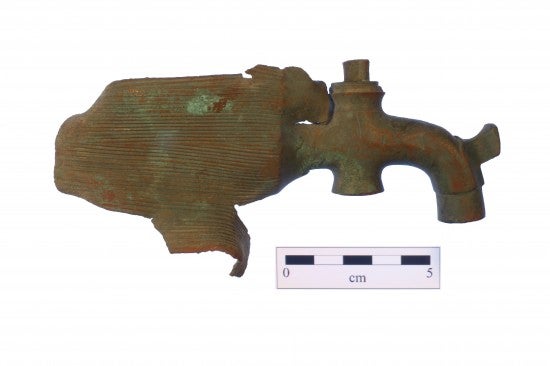
Tourniquet Buckle
The buckle was recovered in 2010 during a metal-detector survey in the prisoners’ area. The buckle is made of brass and iron, and still has a fragment of the heavy cotton fabric that served as the strap. It was produced by Julius Tiencken, who manufactured medical equipment for the Union Army. We don’t know who brought the tourniquet buckle into the camp, but many prisoners held in the camps had a variety of injuries sustained in combat and while held in captivity. The buckle may have been used to treat a prisoner. Alternatively, it might have served other purposes, such as a trade item within the stockade.
View 3D Render of the Tourniquet Buckle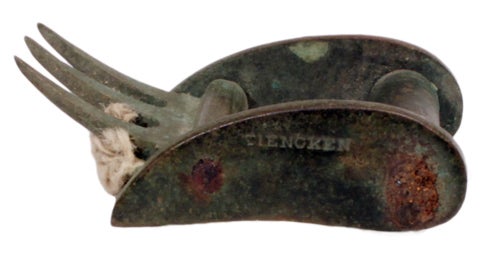
Knife Fragment
Prisoners were not allowed to bring in large knives, such as the Bowie knives that many carried, but they were generally allowed to keep their utensils, including kitchen/butter knives, spoons, and two- and three-tined forks. The knife fragment includes large portions of the blade and tang. The handles were probably bone or wood, but are missing, as are the rivets that attached the handles to the tang. These utensils, in addition to being used for cooking and eating, were probably also used for other activities, because the prisoners had so few items. The photograph shows the artifact before (above) and after (below) conservation in the lab. Below the photograph is a link to a 3D image of the knife.
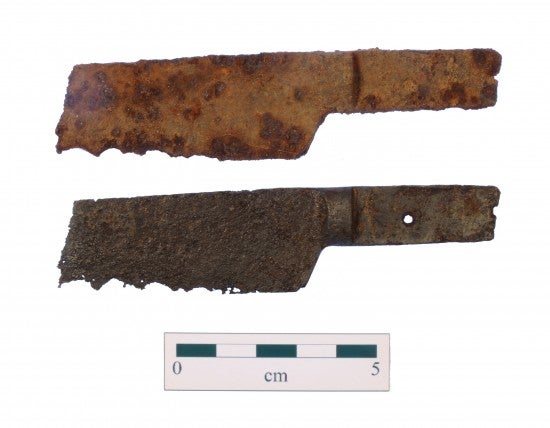
Two-tined Fork
As with the knife fragment, these utensils were carried by most soldiers and were basic parts of their camp gear. In a POW situation, they were probably used for other activities in addition to eating, because prisoners were allowed to keep only a small portion of their gear. This might account for why one of the tines on this fragment is bent. The photograph below shows the artifact before conservation. Beneath the photo is the scanned image of the artifact.
View 3D Render of the Fork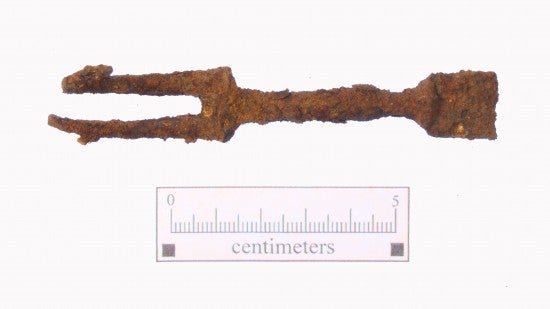
Union Army Brass Coat Button
Early in the war, buttons were stamped with a letter designating a branch of the service. In this case, the “I” signifies Infantry. Later in the war these designations were removed, and “general service” buttons were produced. Several of these buttons have been recovered from the prisoners’ encampment at Camp Lawton, and probably represent a trade item or form of currency in the camp. With a lack of real currency, buttons, grocery tokens, and other small items became a replacement, within the stockade and for trade with guards. Please click on the link below to see a scanned 3D image of the button.
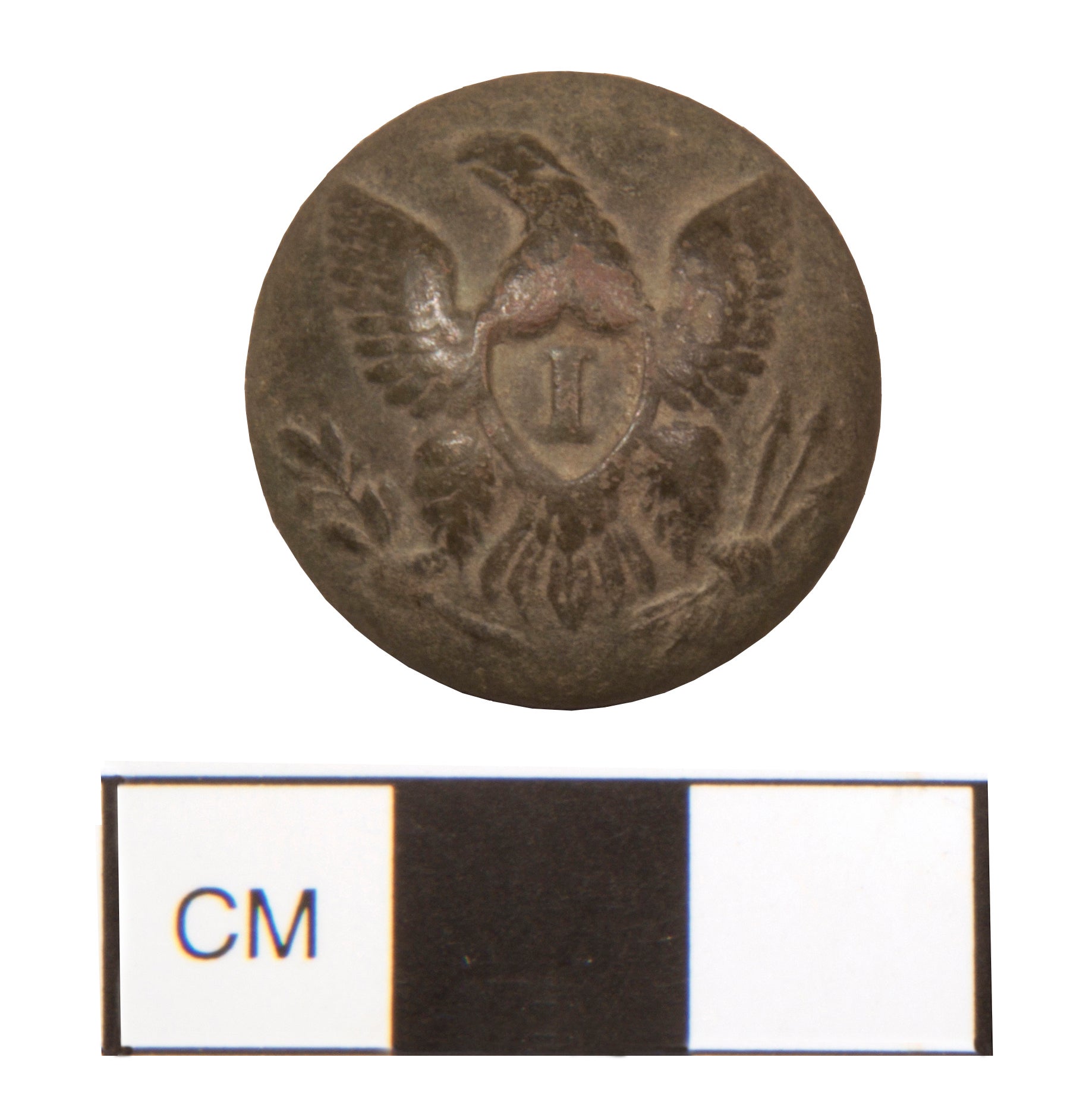
3D PDF files
The model files can be downloaded and viewed with free downloadable programs such as Adobe Reader, Meshlab, and 3D-Tools. The models are scaled in centimeters/millimeters. See the information below the file downloads for how to view the 3D models
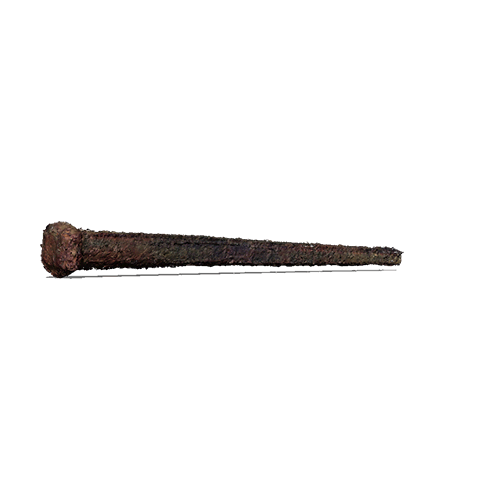
When you first open these PDF documents on Google Drive, there will be a message that says “If you see this message, please change “Comments and Forms” from Print Dialog to “Document and Markups”.
To open the files with Adobe Acrobat:
Download the PDF to your computer. When you open the PDF, you will see a yellow bar at the top with the message – “3D content has been disabled. Enable this feature if you trust this document.”
To enable 3D content in the current document:
Click the Options button and then select an appropriate option:
Trust this document one time only
Trust this document always
To enable 3D content permanently:
Go to Edit > Preferences > 3D & Multimedia and then select the Enable playing 3D content checkbox.
For more information, see “Enable 3D content in PDF” in the Adobe Acrobat Help.
This is one of several kinds of buckles we have recovered from the prisoner encampment; buckle types include those used on knapsacks, belts, and suspenders. Many are of civilian origin, while others were produced for military use.
Download the BuckleWe have recovered numerous buttons from the site; most are the “general service” buttons which were for enlisted men, while others, such as this one, were produced for officers, in this case an officer of infantry.
Download the Infantry Button